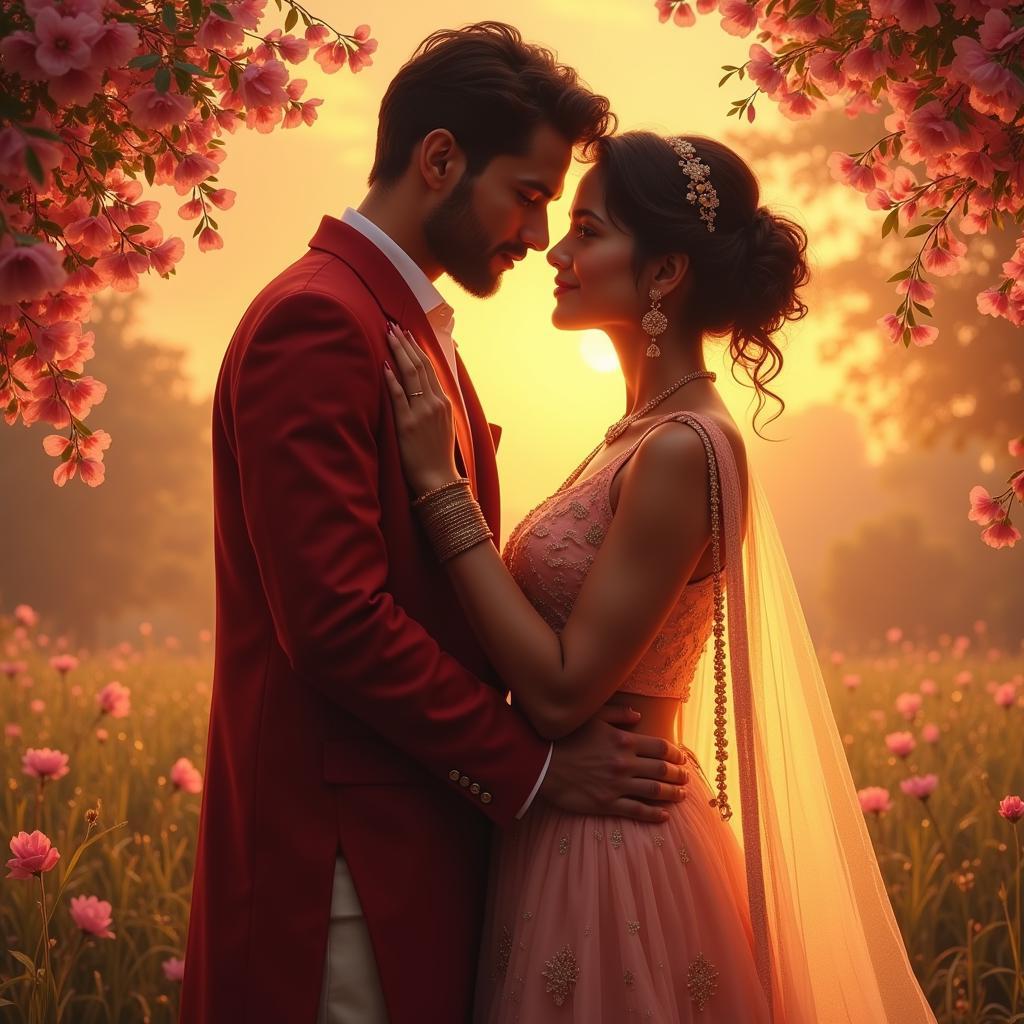“Hoor Ki Pari” evokes a sense of ethereal beauty and enchantment. This phrase, often found in Urdu poetry and songs, paints a picture of heavenly grace and captivating allure. But what exactly does it mean, and what is the cultural significance behind this evocative imagery? Let’s delve into the fascinating world of “hoor ki pari” and explore its romantic connotations.
Decoding “Hoor Ki Pari”: A Literal and Figurative Exploration
“Hoor” (حور) in Urdu refers to the beautiful maidens of Paradise mentioned in Islamic texts. They are described as possessing otherworldly beauty and purity. “Pari” (پری), on the other hand, translates to “fairy” or “angel.” Therefore, “hoor ki pari” literally means “a fairy of the houris” or “an angel-like houri.”
This phrase isn’t just a literal description; it’s a powerful metaphor used to describe a woman of extraordinary beauty, grace, and charm. It signifies someone who possesses an almost divine allure, captivating hearts and inspiring awe. The comparison to celestial beings elevates the subject to a realm of ethereal perfection.
“Hoor Ki Pari” in Urdu Poetry and Song: A Symbol of Romance
The imagery of “hoor ki pari” is a recurring motif in Urdu poetry and music, particularly in ghazals and romantic songs. Poets and lyricists use this phrase to express the captivating beauty of their beloved, comparing her to the heavenly houris. It’s a way to express intense admiration and adoration, highlighting the beloved’s purity, innocence, and captivating charm.
The use of “hoor ki pari” adds a layer of mystique and romance to the artistic expression. It creates an aura of unattainable beauty, suggesting that the beloved is so captivating that she seems to belong to a different realm altogether.
Cultural Significance and Interpretations of “Hoor Ki Pari”
In South Asian cultures, where Urdu is spoken, “hoor ki pari” is readily understood as a compliment of the highest order. It’s a way to express deep admiration for a woman’s beauty and grace. The phrase carries with it a sense of cultural understanding and shared appreciation for traditional romantic ideals.
However, it’s important to note that interpretations can vary depending on context and individual perspectives. While generally used as a positive expression, some might find the comparison to celestial beings overly romanticized or even objectifying.
“Hoor Ki Pari”: Beyond the Literal Meaning
While the literal meaning connects to Islamic mythology, the phrase “hoor ki pari” has transcended its religious origins to become a widely recognized symbol of feminine beauty and allure in Urdu-speaking communities. Its usage in popular culture, especially in Bollywood films and songs, has further solidified its place as a powerful romantic metaphor.
It’s a testament to the enduring power of language and imagery to express complex emotions and create lasting cultural impressions. The phrase encapsulates the ideal of feminine beauty and charm, inspiring poets, artists, and lovers alike for generations.
Why is “Hoor Ki Pari” such a Powerful Metaphor?
The power of “hoor ki pari” lies in its ability to evoke a sense of wonder and awe. It creates a vivid image of ethereal beauty, capturing the imagination and transporting the listener or reader to a realm of romance and enchantment.
 Romantic Couple Inspired by "Hoor Ki Pari"
Romantic Couple Inspired by "Hoor Ki Pari"
Conclusion: The Enduring Allure of “Hoor Ki Pari”
“Hoor ki pari” is more than just a phrase; it’s a cultural touchstone that encapsulates romantic ideals and celebrates the power of feminine beauty. Its usage in Urdu poetry, music, and everyday language reflects its enduring appeal and its ability to evoke a sense of wonder and enchantment. This evocative image continues to inspire artistic expression and capture the hearts of those who appreciate the beauty of Urdu language and culture.
FAQ
-
What does “hoor ki pari” literally mean?
It literally means “a fairy of the houris” or “an angel-like houri.” -
How is “hoor ki pari” used in Urdu poetry?
It’s used as a metaphor to describe a woman of extraordinary beauty and grace. -
What is the cultural significance of “hoor ki pari”?
It’s a high compliment expressing deep admiration for a woman’s beauty in South Asian cultures. -
Is “hoor ki pari” always a positive expression?
While generally positive, interpretations can vary depending on context and individual perspectives. -
Why is “hoor ki pari” a powerful metaphor?
It evokes wonder and awe, creating a vivid image of ethereal beauty. -
Where else besides poetry is “hoor ki pari” used?
It is often used in songs, particularly romantic ones, and in everyday language. -
Can you give an example of how “hoor ki pari” might be used in a sentence?
“Her beauty was so captivating, she looked like a hoor ki pari.”
Common Scenarios and Questions
Scenario: Someone wants to compliment a woman’s beauty in a poetic way.
Question: What is a beautiful Urdu phrase I can use to compliment someone’s appearance?
Scenario: Someone is reading Urdu poetry and encounters the phrase “hoor ki pari.”
Question: What does the phrase “hoor ki pari” symbolize in Urdu poetry?
Further Exploration
For more insights into Urdu poetry and romantic expressions, explore our other articles on:
- The Art of Ghazal
- Romantic Metaphors in Urdu Literature
For any assistance or queries, please contact us at Contact@ViperCircle.com or visit our office at G-5, लोअर परेल, सेनापति बापट मार्ग, मुंबई, महाराष्ट्र – 400013, भारत।. We have a 24/7 customer support team ready to assist you.